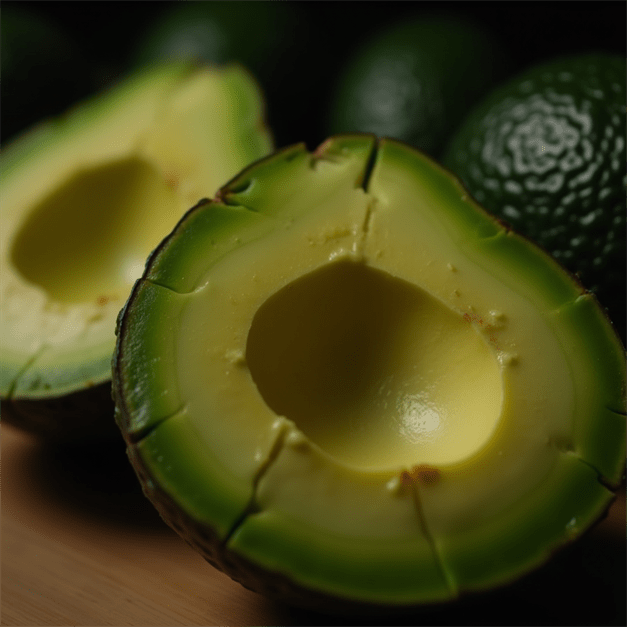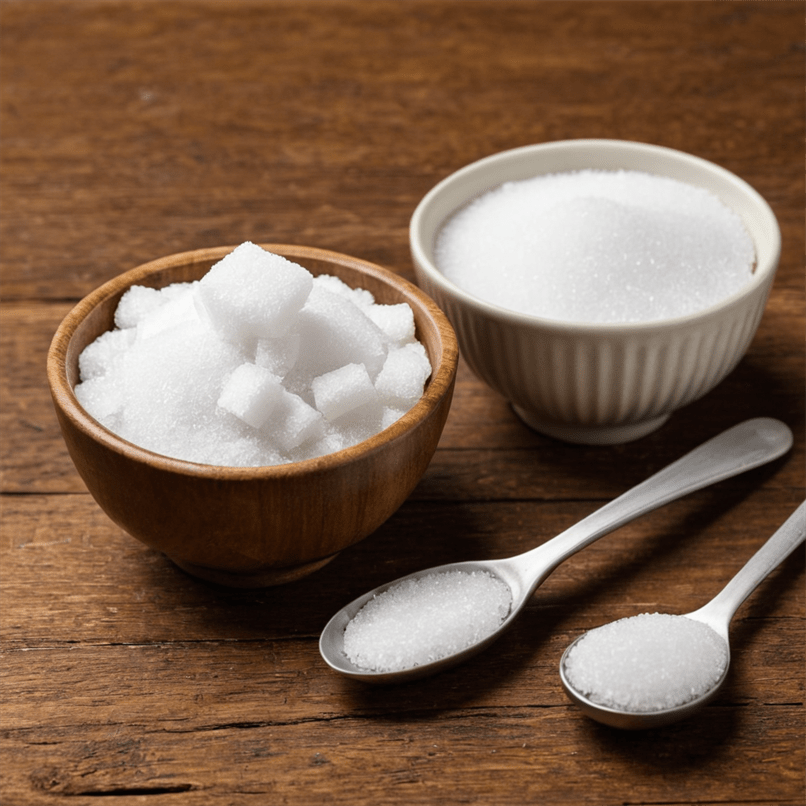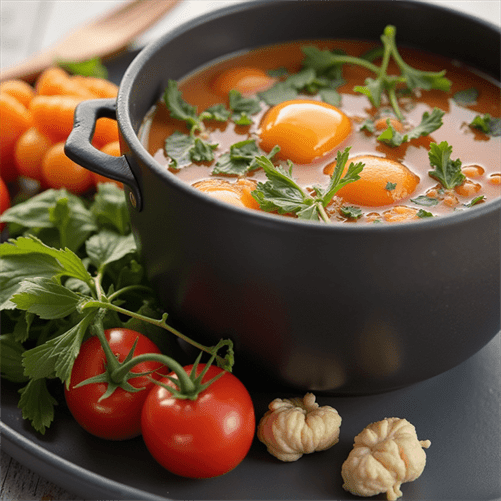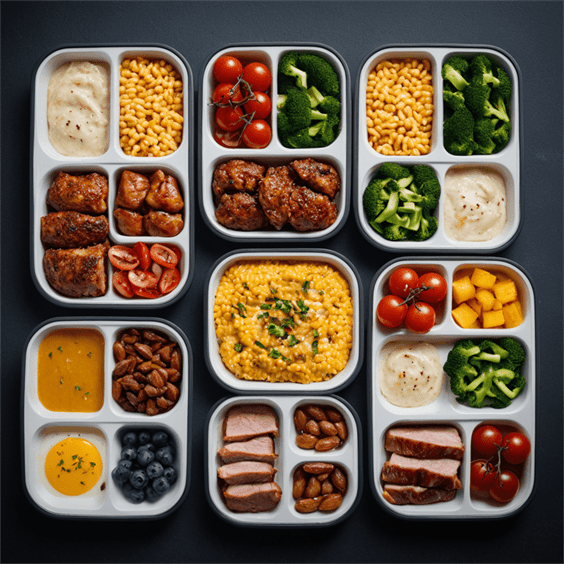9 Ozempic-Like Foods: Are They Right For You?
There are many articles and studies popping up about the miraculous benefits of Ozempic. It’s the latest wonder drug. What exactly is it? Let’s take a look at the best ways to find ozempic-like foods.

Ozempic, also known as semaglutide, is a prescription medication that is used to improve blood glucose (sugar) control in adults with type 2 diabetes. It is a glucagon-like peptide-1 (GLP-1) receptor agonist that mimics the effects of GLP-1, a hormone that increases insulin production and reduces glucose production in the liver.
This drug is not recommended for people with type 1 diabetes or diabetic ketoacidosis. It can be used along with diet and exercise to manage diabetes. Apart from this, some studies have shown that Ozempic can aid in weight loss and reducing cardiovascular events.

Let’s Look Closely at GLP-1
What is this hormone and why is it special? Hormones are special chemical messengers in the body that travel through the bloodstream to organs and tissues. They affect things like growth and development, mood, sexual function, reproduction and metabolism. Examples of hormones include insulin, melatonin, estrogen, testosterone and adrenaline and of course, GLP-1. Each has its unique functions making them special in their own way.
GLP-1 is a hormone produced in the intestines and the brain that has several important functions. It helps to slow down digestion, which allows for better absorption of nutrients. It also helps to lower blood sugar levels by encouraging the pancreas to produce insulin, especially after meals. Furthermore, GLP-1 sends signals to the brain that you’re full, which can help with weight management.

Interesting right? But what if you could reap these benefits without needing prescription medication? Below are 9 foods that have been found to naturally stimulate GLP-1 production.
- Leafy Greens: Foods like spinach, kale and lettuce are rich in fiber and low in calories, which can help control blood sugar levels and stimulate GLP-1 production.
- Whole Grains: Foods like oats, brown rice, and whole grain bread or pasta can help regulate blood sugar levels and increase feelings of fullness.
- Legumes: Beans, lentils, chickpeas and other legumes are high in fiber and protein, which can slow digestion and trigger GLP-1 production.
- Protein-rich foods: Foods like fish, lean meat, poultry and tofu can slow digestion and promote feelings of fullness.
- Nuts: Almonds, walnuts and other nuts are rich sources of healthy fats that can help control blood sugar levels.
- Fruits: Berries especially are high in fiber which helps control blood sugar levels; Apples have been specifically shown to stimulate GLP-1 production.
- Vinegar: Vinegar has been shown to increase feelings of fullness and improve insulin sensitivity.
- Coffee: Recent studies suggest that drinking coffee may stimulate GLP-1 production.
- Fermented foods: Foods like yogurt, kefir, kimchi and sauerkraut can improve gut health, which in turn may enhance GLP-1 production.
While these foods may help to stimulate GLP-1 production, it’s important to note that they are not a substitute for prescribed medication. Always discuss dietary changes with your healthcare provider if you have diabetes or other serious health conditions.
While Ozempic may be a helpful tool for managing type 2 diabetes and aiding in weight loss, incorporating these GLP-1 producing foods
Allulose: A Natural Sweetener with Fat Burning Properties

Allulose, a type of natural sugar, has been proven to have a low glycemic index, making it a healthy choice for those looking to burn fat. Due to its lower calorie count, Allulose can be a great replacement for traditional sugar in your diet.
Including Flax and Omega-3s In Your Diet
- Flax is a great source of alpha-linolenic acid, a type of Omega-3 fat that has been shown to aid in fat oxidation.
- Flax also contains polysaccharides, known as flax polysaccharides that can improve gut health, contributing to a steady and healthy weight loss.
- The richness of Omega-3s in flax can have a positive impact on leptin, a hormone that controls hunger and helps manage body weight.
Foods that Burn Fat: Planning an Ozempic Type Diet
Planning an Ozempic type diet includes focusing on foods that stimulate fat burning and reduce inflammation. Here are some performance foods that should be included in your diet:
- Fruits with low glycemic index: Berries, peaches, apricots, apples, oranges, pears, plums
- Veggies: Spinach, kale, broccoli, cauliflower, zucchini
- Protein-rich Foods: Chicken, fish, lean red meat, eggs, yogurt
- Healthy fats: Avocados, nuts, seeds, olive oil, and coconut oil
Eating Healthy on a Budget with Ozempic-like Foods

Eating healthy doesn’t always mean spending a lot of money. Whole grains, fruits, vegetables, lean proteins are not necessarily expensive. With a little planning, you can enjoy a healthy diet that’s budget-friendly and boosts fat burning.
Health Tips for Weight Loss with Ozempic-Like Foods
Combine eating healthy with a well-balanced lifestyle to make the journey more effective. Here are some tips:
- Regular exercise is crucial.
- Getting a good night’s sleep can help regulate the leptin hormone, assisting in weight management.
- Stress management is important. High stress levels can result in weight gain or difficulty in losing weight.
- Consistency is key in any weight loss plan
Time for a Fat Burning Revolution!
Transforming your diet with Ozempic-like foods can lead to significant body fat reduction. Not only will these nutritional foods for fat burn have a positive impact on your body, but they also contribute to a healthier lifestyle overall. Start this journey towards better health today!
Ready to Try an Ozempic-Like Food Program?
Are you ready to take this step towards a healthier and leaner version of yourself? Do you want expert advice to tailor an effective diet plan based on Ozempic-like foods for fat burning? Click here to get started! With the right diet and consistent effort, your fat burning ambition is well within reach.
Here are some resources where you can get further information.
PubMed (NIH database for biomedical studies)
https://pubmed.ncbi.nlm.nih.gov/?term=GLP-1+food+study
ClinicalTrials.gov (U.S. registry of clinical studies)
https://clinicaltrials.gov/ct2/results?cond=&term=GLP-1+food+study
ScienceDirect (peer-reviewed journal articles)
https://www.sciencedirect.com/search?qs=GLP-1%20food%20study
NCBI (gateway to biomedical research databases)
https://www.ncbi.nlm.nih.gov/search/all/?term=GLP-1+food+study







